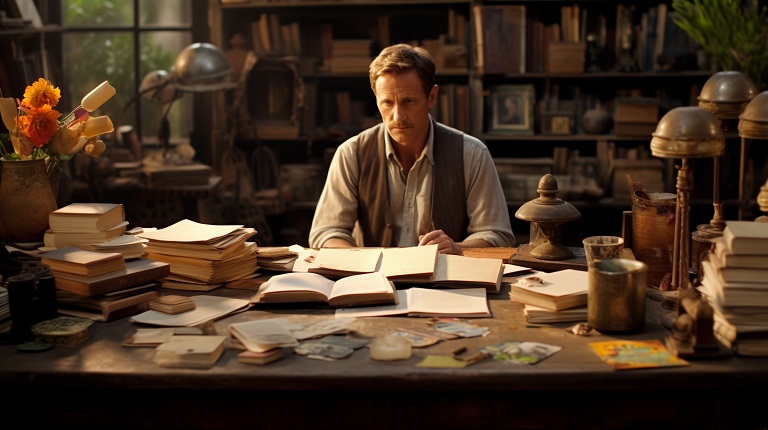Bruce Chatwin’s iconic travel memoir, “In Patagonia”
Bruce Chatwin‘s iconic travel memoir, “In Patagonia,” takes readers on an exhilarating journey through the wild and rugged landscapes of South America. Known for his captivating storytelling and adventurous spirit, Chatwin delves deep into the heart of Patagonia, unearthing its secrets and painting a vivid picture of this mystical place. From its towering mountains to its vast plains and remote villages, Chatwin’s exploration of Patagonia is a testament to his unparalleled ability to transport readers to far-flung lands.
In “In Patagonia,” Bruce Chatwin embarks on a soul-searching expedition that goes beyond mere travelogue. With lyrical prose and keen observation, he weaves together tales of indigenous tribes, eccentric characters, and forgotten legends that define the essence of this untamed land.
The allure of Patagonia’s rugged beauty
Patagonia, with its rugged beauty, has long captivated the imaginations of adventurers and nature enthusiasts alike. From its towering peaks to its vast glaciers, this remote region in southern Argentina and Chile offers a mesmerizing landscape that is both awe-inspiring and humbling. The allure of Patagonia lies not only in its raw natural beauty but also in the sense of solitude and wilderness it evokes.
Bruce Chatwin‘s book “In Patagonia” beautifully captures the essence of this alluring destination. Through his vivid descriptions and poetic prose, he takes readers on a journey into the heart of Patagonia’s rugged landscapes. Chatwin paints a picture of an untamed land where wind-swept plains meet jagged mountains, creating a dramatic contrast that is both breathtaking and mysterious. His words transport readers to this remote corner of the world, allowing them to experience the same sense of wonder and fascination he felt during his own travels.
The allure of Patagonia’s rugged beauty goes beyond its physical features; it also lies in the rich history and culture that permeate the region. From indigenous tribes who once called this land home to European settlers who sought their fortunes here, Patagonia carries with it tales of bravery, exploration, and resilience. This blend of natural wonders and cultural heritage makes Patagonia an irresistible destination for those seeking adventure off the beaten path.
Chatwin’s journey to the southern wilderness
“In Patagonia, Bruce Chatwin embarks on a captivating journey to the southern wilderness. The vast and untamed landscapes of Patagonia serve as the backdrop for his exploration. With each step he takes, Chatwin delves deeper into the mysteries of this remote region, uncovering its fascinating history and encountering its eccentric inhabitants.
As Chatwin ventures further into the wild, he becomes enthralled by the stories and legends that have shaped Patagonia’s identity. From tales of infamous outlaws to accounts of indigenous tribes, he paints a vivid picture of this rugged and enchanting land. Through his encounters with gauchos, Welsh settlers, and other locals, Chatwin captures the spirit of Patagonia in all its contradictions – both harsh and beautiful.
Throughout his journey in the southern wilderness, Chatwin’s writing is infused with a sense of adventure and wanderlust. As he immerses himself in this vast expanse of unspoiled nature, he contemplates questions about human existence and our place within the natural world. Ultimately, his exploration serves as a metaphorical quest for self-discovery as much as it is about unraveling the mysteries that lie hidden within Patagonia‘s breathtaking landscapes.
The wildlife and landscapes of Patagonia
One of the most captivating aspects of Patagonia is its incredible wildlife. From majestic condors soaring through the sky to playful penguins waddling along the coast, this region is home to a diverse range of animal species. The puma, also known as the mountain lion or cougar, is another iconic inhabitant of Patagonia. With its sleek and powerful physique, it effortlessly roams through the vast landscapes in search of prey.
Speaking of landscapes, Patagonia boasts some of the most breathtaking scenery in the world. Towering snow-capped peaks pierce through the clouds, while glaciers glisten under the sun’s rays. The region’s famous national parks, such as Torres del Paine and Los Glaciares National Park, offer visitors a chance to explore these pristine landscapes up close. Hiking trails lead adventurers through dense forests, across sparkling lakes and rivers, and past cascading waterfalls that seem straight out of a fairy tale.
Overall, Patagonia is a haven for nature lovers and outdoor enthusiasts alike. Its wildlife and landscapes combine to create an awe-inspiring experience that will stay with visitors long after they have left this enchanting corner of the world.
Cultural encounters in an isolated region
Patagonia, an isolated region at the southern tip of South America, is known for its breathtaking landscapes and unique cultural encounters. Bruce Chatwin‘s travel memoir, “In Patagonia,” vividly captures his own experiences with the indigenous people and explorers who have left their mark on this remote land. One such encounter was with the Tehuelche people, nomadic hunter-gatherers who roamed the plains for centuries before European settlers arrived.
Chatwin describes witnessing a traditional Tehuelche hunting ritual during his visit to a remote village. He recounts how he observed their deep connection with nature as they performed sacred dances and chants to honor their prey. This encounter not only allowed him to witness their ancient traditions but also shed light on the resilience and adaptability of indigenous cultures in the face of modernization.
Another fascinating aspect of cultural encounters in Patagonia explored by Chatwin is that of early European explorers who braved the harsh conditions in search of adventure and glory. In his book, he delves into stories of sailors, pirates, and fortune seekers who risked everything to conquer uncharted territories. These encounters highlight both the clash between different cultures as well as instances where mutual respect and collaboration bridged gaps between indigenous communities and outsiders.
Overall, “In Patagonia” offers a captivating glimpse into cultural encounters in an isolated region where tradition intertwines with exploration, providing readers with a deeper understanding of the diverse tapestry that shapes Patagonian culture today.
The mystical legends of Patagonia
One of the most intriguing aspects of Patagonia is its rich tapestry of mystical legends that have been passed down through generations. These legends are deeply rooted in the region’s indigenous cultures, and they offer a glimpse into a world where reality and myth intertwine seamlessly. From tales of mythical creatures lurking in the depths of pristine lakes to ancient spirits inhabiting remote mountains, Patagonia is a land brimming with enchantment.
One such legend revolves around the mysterious creature known as El Chupacabra, which translates to “The Goat Sucker.” According to local folklore, this creature is said to prey on livestock by sucking their blood dry. The mere mention of its name sends shivers down the spines of Patagonian villagers who believe that encountering El Chupacabra may bring about misfortune or even death.
Another captivating legend from Patagonia tells the story of La Llorona, or “The Weeping Woman.” In this haunting tale, La Llorona is said to be a ghostly figure cursed for eternity after drowning her children out of jealousy. It is believed that she roams the shores of rivers and lakes at night, sobbing inconsolably as she searches for her lost offspring. Locals warn against venturing near bodies of water after sunset, for it is said that those who hear her wails may suffer a similar fate as her ill-fated children.
Reflections on the significance of the journey
The book “In Patagonia” by Bruce Chatwin is not just a travelogue, but also a reflection on the significance of the journey itself. As Chatwin explores the vast and untamed landscapes of Patagonia, he delves into deeper questions about the nature of travel and its impact on our lives. Through his encounters with locals, historical sites, and personal experiences, he contemplates how journeys can transform us both physically and emotionally.
One aspect that Chatwin focuses on is the idea of self-discovery through travel. As he immerses himself in this remote region, he finds himself confronting his own limitations and fears. The physical challenges of navigating treacherous terrains and enduring harsh weather conditions force him to confront his innermost vulnerabilities. In doing so, he discovers new strengths within himself that were previously unknown. This notion of pushing oneself to the limit while traveling is symbolic of how journeys can help us uncover hidden aspects of our own personalities.
Another theme that emerges from Chatwin’s reflections on the journey is its ability to broaden our perspectives and challenge preconceived notions. Through encounters with individuals from different cultures and backgrounds, Chatwin learns about their unique histories, traditions, and ways of life. These interactions act as catalysts for self-reflection as well as an opportunity to question his own beliefs and values. By stepping outside his comfort zone and engaging with unfamiliar environments, Chatwin demonstrates how travel can help us gain a more nuanced understanding of ourselves and the world around us.
Conclusion: Discovering oneself in Patagonia
In Bruce Chatwin‘s travel memoir “In Patagonia,” the author embarks on a journey through the vast and mysterious landscapes of Patagonia, leading to an unexpected self-discovery. As he traverses this rugged terrain, Chatwin encounters various characters, each with their own stories to tell. Through these interactions, he begins to unravel the layers of his own identity and finds himself questioning his purpose in life.
Throughout his expedition, Chatwin is confronted by the raw beauty and untamed wilderness of Patagonia. The sheer magnitude of its landscapes forces him to confront his own insignificance in the grand scheme of things. This realization becomes a turning point for Chatwin as he starts to look inward and reflect on his place in the world.
Furthermore, as Chatwin listens to the captivating tales of local inhabitants and fellow travelers along his journey, he discovers that their stories often mirror aspects of his own personal experiences. These parallels serve as a catalyst for him to delve deeper into understanding himself. Ultimately, it is this process of self-reflection prompted by his encounters in Patagonia that allows Chatwin to gain a new perspective on life and uncover aspects about himself that were previously hidden or unexplored.












